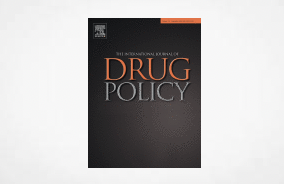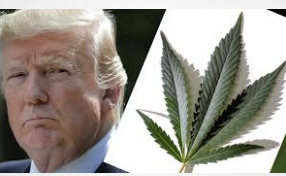,
June 2024
Highlights
- We used discrete choice experiment to examine impacts of cannabis edible packaging.
- Participants prefer branded packages to plain packages.
- Participants prefer health claims to no health claims.
- Participants using cannabis prefer youth-appealing packages to branded packages.
- Package style and health claim are the most important package attributes.
Abstract
Backgrounds
Cannabis edibles recently gained considerable market share in the United States. The tobacco and food literatures consistently suggest that product packaging regulations are crucial to substance control, but little is known about how product packaging may impact cannabis edible use. This study aims to estimate the impacts of packaging on individual preferences for cannabis edibles and explore heterogeneities in preferences by cannabis use status and use purposes.
Methods
1578 adults were recruited, who lived in 18 states and Washington D.C. in the United States that legalized recreational cannabis by the time of data collection in August and September of 2022. An online discrete choice experiment was conducted to elicit individual choices between cannabis edibles with variations in five packaging attributes: package style, health claim, potency indicator, warning label position, and warning label text. Mixed logit regressions were used to assess associations between package attributes and package choices. Subsample analysis was conducted by cannabis use status (users vs. nonusers) and use purposes (medical-only, recreational-only, and dual-purpose) to detect heterogeneities.
Results
Almost all subsamples prefer branded packages to plain packages, any health claim to no health claim, and any potency indicator to no potency indicator. Cannabis users, particularly recreational-only users and dual-purpose users, also prefer youth-appealing packages to branded packages. Warning label position and text have limited impacts on choices. Overall, package style is perceived to be the most important attribute among the five (relative importance 33.2–50.8%), followed by health claim (relative importance 22.6–30.5%).
Conclusion
In the United States, adults’ preferences for cannabis edibles are associated with packaging features. Policies requiring plain package and prohibiting youth-appealing package and unsubstantiated health claims may be effective methods of cannabis control.
Introduction
With recreational cannabis legalized in over twenty states in the past decade in the United States (U.S.), non-combustion administration methods, such as ingesting edibles, have consistently gained popularity and market share. Estimates from 2020 data show that 60.8% of past-year cannabis users ingested cannabis edibles in the past year in states with recreational cannabis legalization, with 19.5% of recreational users and 23.8% of medical users reporting ingestion as their primary method of cannabis use. (Hammond et al., 2022; Shi, 2021) In 2022, cannabis edibles had a market share of 12.1% in U.S. legal cannabis markets. (Headset, 2022) Survey data show that edible use is substantially more prevalent in states with medical and/or recreational cannabis legalization compared to states without legalization, and that longer durations of legal cannabis markets and greater dispensary density are associated with higher prevalence of edible use. (Borodovsky, Crosier, Lee, Sargent & Budney, 2016; Hammond et al., 2022) Regulating cannabis edibles in legal markets is therefore an important avenue through which policymakers may reduce harms associated with problem cannabis use.
Cannabis edibles have unique health risks and public health concerns compared to other cannabis products, which create new challenges for public policymaking. Their psychoactive effects have delayed onset and extended duration and are often unpredictable because of inconsistent potency. As a result, cannabis edibles are associated with greater risks of overdose. (Barrus et al., 2016) Data on healthcare visits suggest that cannabis edibles were involved in most cases of acute cannabis intoxication. (Barrus et al., 2016; Monte et al., 2019) Cannabis edible packages are commonly designed to be youth-appealing. Studies found that 10–15% cannabis edible packages imitated food brands that are popular among youths and approximately 20% recreational cannabis dispensaries carried youth-appealing products with edibles being responsible for the majority of them. (Ompad et al., 2022; Shi & Pacula, 2021; Tan et al., 2022) Unintentional ingestion of cannabis by youths has considerably increased in recent years, especially in states with medical and/or recreational cannabis legalization, and these cases mainly involved cannabis edibles. (Chiu, Leung, Hall, Stjepanovic & Degenhardt, 2021; Monte et al., 2019; Vo et al., 2018)
Many concerns discussed above can be mitigated by cannabis edible packaging regulations, such as those regulating package style, health claims, potency labels, and warning labels. A significant amount of research in tobacco control has found positive health impacts from requiring plain or standardized package designs, and implementing prominent and comprehensive health warning messages that usually involve large warning size, prominent positioning, graphics highlighting health risks, and rotating warning texts. (Buckell & Sindelar, 2019; Cunningham, 2022; Hammond, 2011; Moodie et al., 2022; Shang et al., 2020) Literature on food packaging also suggests that informative nutritional labels on the front of food packages may improve nutritional knowledge and health outcomes. (Crosetto, Lacroix, Muller & Ruffieux, 2020; Temple, 2020)
Cannabis edible packaging regulations vary greatly across states with recreational cannabis legalization in the U.S. and are often not enforced effectively. More than 20 states have legalized recreational cannabis, but only half of them have regulations specific to cannabis edibles. (Goundar, Macaulay & Szafron, 2021) All the states with specific regulations on edibles prohibit edible packages that appeal to youths, but the prohibition ranges from vague restrictions on all youth-appealing features to banning lists of specific features such as cartoon characters, real or fictional humans, bright colors, and bubble fonts. Connecticut, Massachusetts, and New Jersey have requirements to standardize the color of cannabis product packages. Such requirements are less comprehensive than Canada’s, which prohibit graphics and images, branding elements, and multiple colors.
Some states entirely prohibit dietary and health claims on cannabis packaging. (Goundar et al., 2021) Despite these prohibitions, unsubstantiated health claims not evaluated by the FDA or supported by sufficient scientific evidence, such as those about pain, sleep, and anxiety, have been frequently observed in cannabis product packages, including edibles. (Barrus et al., 2016; Hoeper et al., 2022) Additionally, many unsubstantiated health claims are made in online descriptions of products, with pain and insomnia relief being the most frequent claims on dispensary websites. (Hoeper et al., 2022)
All states require potency labeling in either percentages or milligrams depending on the cannabis product type, and they all limit the tetrahydrocannabinol per serving and per package for edible products. (Schauer, 2021) However, this information is typically found in small text on an inconspicuous region of the package, potentially limiting their effectiveness. Researchers have identified unit-dose packaging as a promising policy for increasing consumer knowledge about edible serving sizes. (Goodman & Hammond, 2020) Consumer-friendly, front-of-package visual indicators that summarize nutritional information in large font or easily recognizable symbols have been suggested effective in nutritional labeling literature. (Temple, 2020) However, no studies have examined their effectiveness in cannabis control.
Almost all states adopt lengthy and composite warning messages combining multiple themes, with no requirements on warning label positions. New York State is an exception, requiring three single-themed messages rotating on packages, but none of them are specifically related to edibles. Only a few states require additional warning messages that specifically warn about the delayed onset and prolonged psychoactive effects of edibles. Rotating single-themed short messages are proven effective, recommended by WHO, and required by FDA on cigarette packages, (Hammond, 2011), but they have not been studied in cannabis literature.
Studies evaluating the impacts of cannabis packaging have only emerged very recently and are still sparse. A major challenge is the lack of high-quality observational data linking individual outcomes to exposure to packages and related policies. Additionally, there are concerns about the endogeneity of the relationship between self-reported exposure and outcomes, which complicates analysis. As a result, most existing studies used between-individual experiments that randomized participants to view different packages and elicited self-reported ratings or perceptions. Some of these experiments analyzed real-world cannabis package policies such as Canadian plain packaging, Canadian versus U.S. state health warnings, and unit-dose packaging. (Goodman & Hammond, 2020; Goodman, Leos-Toro & Hammond, 2019, 2021) Another strand of the literature developed hypothetical cannabis packaging with various brand personality styles and novel health warnings not implemented by any governments such as graphic warnings. (Kowitt et al., 2022; Leos-Toro, Fong & Hammond, 2021; Mutti-Packer, Collyer & Hodgins, 2018)
This study aims to estimate the impacts of packaging attributes on individual preferences for cannabis edibles and explore heterogeneities in preferences by cannabis use status and use purposes. We implemented a discrete choice experiment (DCE), an experimental approach commonly used in tobacco research and health economics. (Regmi, Kaphle, Timilsina & Tuha, 2018; Soekhai, de Bekker-Grob, Ellis & Vass, 2019) The hypothetical nature of the experiment allows us to evaluate potentially effective packages that are not available in the U.S. markets, such as the plain package required by Canada. Compared to existing experimental studies on cannabis packaging that typically asked participants to state opinions with Likert scales or subjective descriptions, our DCE study asked participants to choose from package alternatives with systematic variations in package attributes. This DCE methodology has several advantages. (1) The outcome measure of selecting a product for hypothetical consumption in a DCE is more closely linked to real purchase and substance use behaviors. (2) DCEs assess not only between-individual variations but also within-individual variations, such that the findings may have stronger causal inferences. (3) The packages in our DCE varied multiple packaging attributes, including package style, health claim, potency indicator, warning label position, and warning label text, so we were able to evaluate multiple attributes in the same experiment without requiring a large number of trials and to quantify the independent impacts and relative importance of multiple attributes. Because the subpopulations characterized by different cannabis use status and use purposes may respond to packages differently and yield different policy implications, we also conducted subgroup analysis to explore heterogeneities.
Our study is also novel in its focus on cannabis package attributes. The few previously published DCEs on cannabis products have focused on products other than edibles (e.g., flowers) and on instrumental attributes of the products such as price and potency rather than solely packaging attributes. (Donnan, Johnston, Coombs, Najafizada & Bishop, 2023, Donnan, Johnston , Najafizada & Bishop, 2023; Shi, Cao, Shang & Pacula, 2019) Although these instrumental attributes are important factors in consumer choice, policymakers must regulate cannabis packaging regardless of price and potency, and directional effects of package attributes are important even if the magnitude is small compared to price and potency. Specifically regarding price, it may be unrealistic to expect consumers to show significant willingness to pay for package attributes alone without any variation in the underlying product characteristics. It is not uncommon for recently published DCEs in public health to omit price as a varying attribute. (Barrientos-Gutierrez et al., 2020; Hoek et al., 2022; Lee et al., 2021) Our study is also the first to examine the impacts of youth-appealing package features. Built upon the body of previous experimental work on cannabis packages, we developed novel experimental stimuli, most notably the hypothetical branded package with a counterpart youth-appealing version.
Our study is expected to provide important knowledge to policymakers about consumer preferences for cannabis packaging. Depending on their goals, policymakers may use this knowledge to shape regulations on package attributes. If the policy goal is to reduce cannabis use, they may mandate that packages use the least preferred versions of the most impactful attributes from our study. Alternatively, if the policy goal is to improve health knowledge with minimal impact on consumer choice, they may target package attributes with the least impact on preferences. In this way, our analysis provides useful insights for a variety of policy goals in cannabis control.
Section snippets
Participants
In August and September of 2022, we recruited 1578 participants from online panels through Qualtrics, a company providing recruitment services and an online survey platform. The inclusion criteria are adults aged 18 and older living in one of the 18 states plus Washington, D.C., where recreational cannabis had been legalized by the time of data collection. The 18 states include Alaska, Arizona, California, Colorado, Connecticut, Illinois, Maine, Massachusetts, Michigan, Montana, Nevada, New
Sample characteristics
The sample characteristics are described in Table S1 with separate columns for cannabis users (N = 1009) and cannabis nonusers (N = 569). Among cannabis users, 30.13%, 41.53%, and 28.34% are medical-only, recreational-only, and dual-purpose users, respectively. Table S2 shows a comparison of our study sample and the 2020 National Survey on Drug Use and Health on which our sampling quotas were based.
Predictors of always opting out
Among cannabis users, 3.96% always opted out. Among cannabis nonusers, 30.40% always opted out.
Discussion
We find several interesting results with policy implications from our analysis of preferences for cannabis edible package attributes. Package style is the most important attribute among the five with an estimated relative importance 33.2–50.8% among subsamples. This result is sensible because the package style attribute involves the most drastic visual changes and therefore was likely the most noticeable and salient attribute during choice scenarios. All subsamples prefer the branded package
Conclusion
This is the first study using a DCE approach to systematically assess individual preferences for cannabis edible product packaging. Our results show that both cannabis users and nonusers prefer branded packages over highly regulated plain packages, and that cannabis users prefer youth-appealing packages to branded packages. Both cannabis users and nonusers also place a high importance on health claims, with a preference for packages with any health claim over packages with no health claim.
Ethics approval
The authors declare that they have obtained ethics approval from an appropriately constituted ethics committee/institutional review board where the research entailed animal or human participation.
This study was approved by the Human Research Protections Program at the University of California San Diego (protocol number 200684).
The authors declare that the work reported herein did not require ethics approval because it did not involve animal or human participation.
CRediT authorship contribution statement
Michael Cooper: Writing – review & editing, Writing – original draft, Visualization, Validation, Methodology, Formal analysis, Data curation, Conceptualization. Yuyan Shi: Writing – review & editing, Supervision, Resources, Project administration, Methodology, Investigation, Funding acquisition, Formal analysis, Data curation, Conceptualization.
Declaration of competing interest
The authors declare that they have no known competing financial interests or personal relationships that could have appeared to influence the work reported in this paper.
Funding sources
This research was supported by grant #R01DA049730 from the U.S. National Institute on Drug Abuse (PI: Shi) and grant #65216 from the U.S. California Department of Cannabis Control (PI: Shi). This article is the sole responsibility of the authors and does not reflect the views of the National Institute on Drug Abuse or the California Department of Cannabis Control. The National Institute on Drug Abuse and the California Department of Cannabis Control have no roles in the collection, analysis and
References (47)
- et al.
Learning design contingent valuation (LDCV): NOAA guidelines, preference learning and coherent arbitrariness
Journal of Environmental Economics and Management
(2008) - et al.
Low-income parents’ use of front-of-package nutrition labels in a virtual supermarket
Journal of Nutrition Education and Behavior
(2020) - et al.
Smoking, vaping, eating: Is legalization impacting the way people use cannabis?
The International Journal on Drug policy
(2016) - et al.
Conjoint analysis applications in health–a checklist: A report of the ISPOR good research practices for conjoint analysis task force
Value in Health: The Journal of the International Society for Pharmacoeconomics and Outcomes Research
(2011) - et al.
Public health impacts to date of the legalisation of medical and recreational cannabis use in the USA
Neuropharmacology
(2021) - et al.
Can healthcare choice be predicted using stated preference data?
Social Science & Medicine
(2020) - et al.
The impact of plain packaging and health warnings on consumer appeal of cannabis products
Drug and Alcohol Dependence
(2019) - et al.
Influence of package colour, branding and health warnings on appeal and perceived harm of cannabis products among respondents in Canada and the US
Preventive Medicine
(2021) - et al.
A comparative analysis of laws on recreational cannabis edibles between Canada and the United States of America
The International Journal on Drug policy
(2021) - et al.
Trends in the use of cannabis products in Canada and the USA, 2018 – 2020: Findings from the International Cannabis Policy Study
The International Journal on Drug policy
(2022)
Source & more information
https://www.sciencedirect.com/science/article/abs/pii/S0955395924001385


















